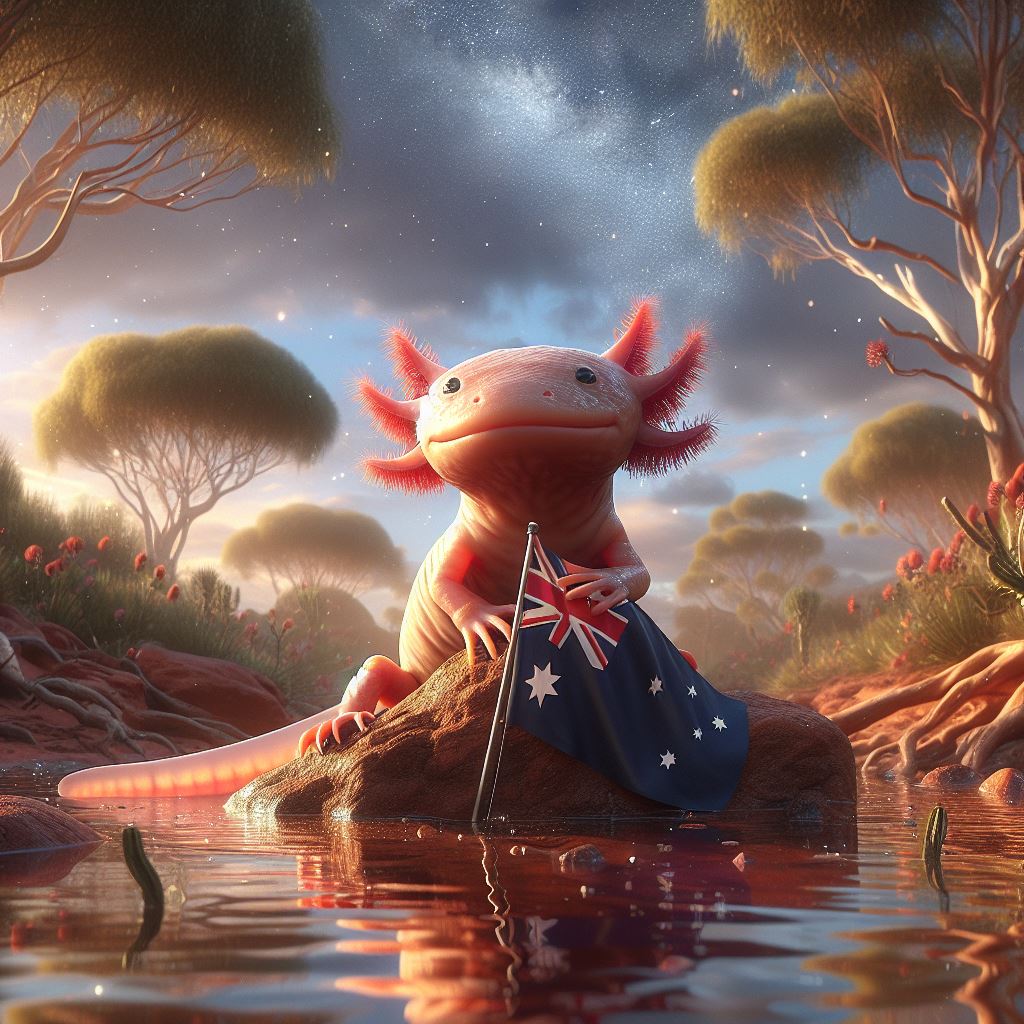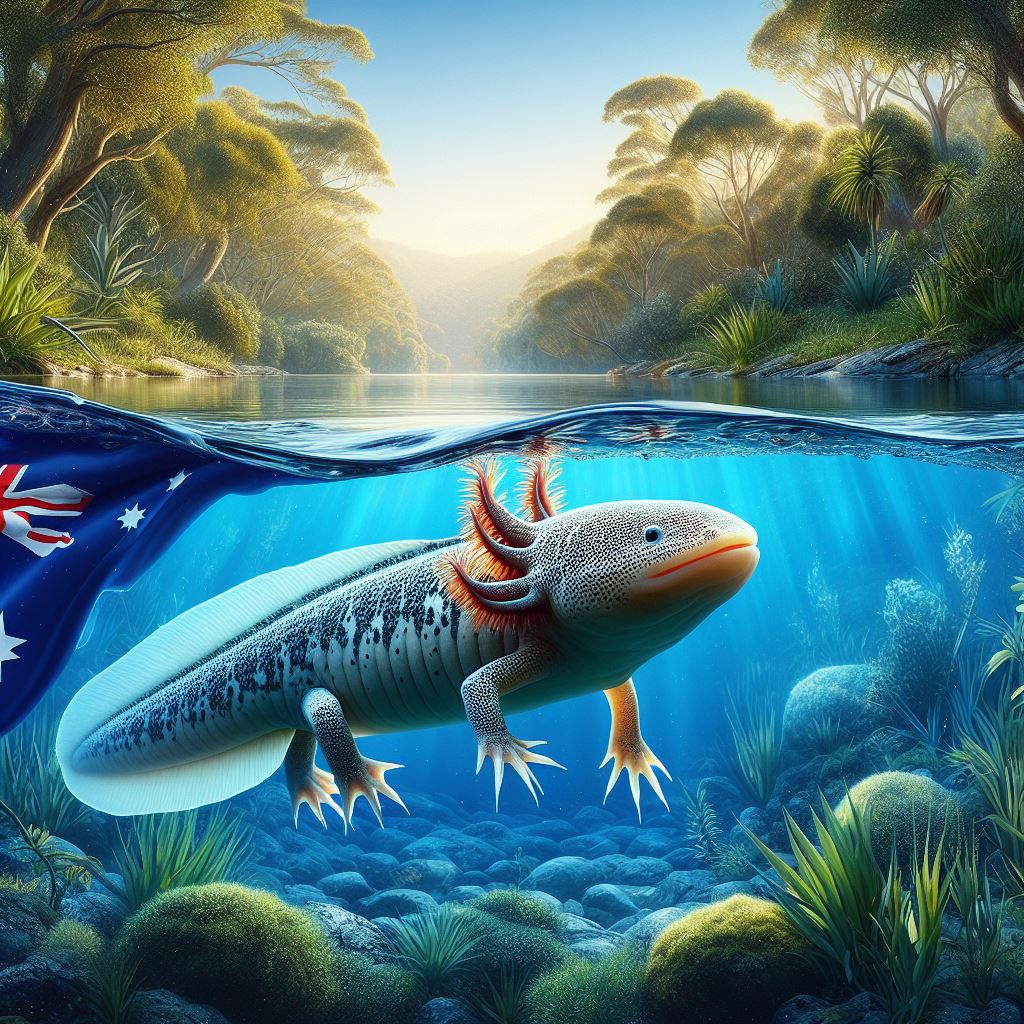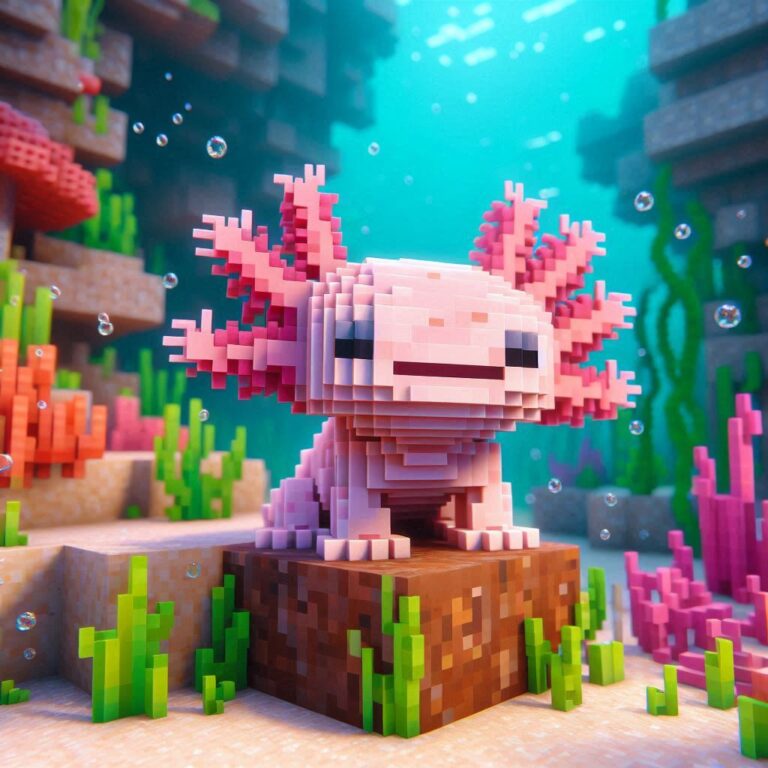
Axolotls, native to Mexico, are not naturally found in Australia’s wild habitats. Their habitat primarily includes lakes and canals in the region of Xochimilco, Mexico City. However, they have gained popularity as exotic pets worldwide, including Australia. Despite not being indigenous to Australia, axolotls can be legally kept as pets in the country, subject to specific regulations and permits. This exotic amphibian’s presence in Australia is predominantly within controlled indoor environments, such as aquariums and tanks, where their unique appearance and fascinating behaviors captivate enthusiasts and hobbyists alike.
Environment Effect
Axolotls, with their remarkable regenerative abilities and peculiar appearance, have sparked interest worldwide, including in Australia. However, introducing them into new environments raises concerns about potential ecological impacts. One crucial consideration is their habitat requirements. Axolotls thrive in freshwater habitats with cool temperatures, abundant vegetation, and low levels of pollutants. In Australia, replicating such conditions can be challenging, especially in regions with warmer climates. Despite this, dedicated enthusiasts have successfully created suitable habitats for axolotls in controlled indoor settings, such as aquariums and tanks. These environments mimic their natural habitat to a certain extent, with carefully regulated temperature, lighting, and water quality. However, ensuring these conditions remain stable and conducive to axolotl health can require ongoing effort and expertise.
Suitable Habitats
Creating suitable habitats for axolotls in Australia involves careful consideration of various factors to replicate their natural environment as closely as possible. One essential aspect is the tank setup. Axolotls require spacious tanks with ample room to move and explore, along with hiding spots like caves or plants. Substrate choice is critical, as axolotls may accidentally ingest substrate materials, leading to potential health issues. Therefore, opting for smooth, non-abrasive substrates like sand or smooth gravel is advisable. Maintaining water quality is paramount, with regular water changes and filtration to remove waste and maintain optimal conditions. Temperature control is also crucial, as axolotls prefer cooler water temperatures ranging from 16 to 18 degrees Celsius. Achieving and maintaining these conditions ensures the well-being and longevity of captive axolotls in Australia.
Impact on Native Species
The introduction of non-native species like axolotls into Australian ecosystems can potentially disrupt local biodiversity and ecosystems. While axolotls primarily inhabit freshwater environments, their introduction into natural water bodies in Australia could have unforeseen consequences. Concerns include competition with native species for resources, predation on smaller aquatic organisms, and the spread of diseases or parasites. Therefore, it’s essential for axolotl enthusiasts to adhere to regulations and best practices to prevent accidental release into the wild. Responsible ownership, including proper containment and disposal measures, is crucial to minimize any adverse impacts on native Australian species and ecosystems. Through awareness and education, enthusiasts can enjoy the presence of axolotls in Australia while mitigating potential ecological risks.
Legality
The legality of owning axolotls in Australia is a topic of interest among enthusiasts and prospective pet owners. While these fascinating amphibians are not native to Australia, they have gained popularity as exotic pets in recent years. Understanding the legal framework surrounding axolotl ownership is crucial to ensure compliance with relevant regulations. Generally, axolotls are legal to own in Australia, but the specifics may vary depending on the state or territory. It’s essential for individuals interested in keeping axolotls to research and familiarize themselves with the laws and regulations governing exotic pet ownership in their area. By doing so, they can enjoy the companionship of these unique creatures while respecting legal requirements and contributing to responsible pet ownership practices.
Legal Status
In Australia, the legal status of axolotls as pets varies depending on the jurisdiction. While they are generally permitted in most states and territories, some regions may have specific regulations governing their ownership. For example, in New South Wales, axolotls are classified as non-native animals under the Biosecurity Act 2015, and their importation and possession are regulated to prevent potential environmental impacts. Similarly, in Victoria, axolotls are not considered pests or declared animals, but their importation and possession may be subject to wildlife regulations. Understanding the legal status of axolotls in a particular area is essential for prospective owners to ensure compliance with relevant laws and avoid potential legal issues.
Regulations and Permits
The regulations and permits required for owning axolotls in Australia can vary depending on the state or territory. While axolotls are generally not subject to strict regulations compared to some other exotic pets, there are still legal considerations to take into account. In some regions, individuals may need permits or licenses to import, possess, or breed axolotls. These permits may be issued by wildlife authorities or regulatory agencies responsible for overseeing exotic pet trade and conservation. Additionally, there may be specific requirements regarding the housing, transportation, and disposal of axolotls to prevent potential environmental risks. Prospective axolotl owners should consult with local authorities or relevant agencies to ensure compliance with regulations and obtain any necessary permits before acquiring these fascinating amphibians. By adhering to regulatory requirements, owners can contribute to the responsible management of axolotl populations and minimize potential impacts on native species and ecosystems.
Axolotl Price in Australia

The price of axolotls in Australia can vary depending on various factors, including their age, coloration, size, and genetic traits. As exotic pets, axolotls have gained popularity among enthusiasts and hobbyists, leading to a diverse market with a range of options available. While some individuals may opt for standard color morphs, such as wild-type or albino axolotls, others may seek out rare or specialized varieties, such as melanoid or leucistic axolotls. Additionally, factors such as breeder reputation, lineage, and breeding practices can influence the price of axolotls in Australia. Prospective owners should research reputable breeders and consider their budget and preferences when selecting an axolotl to ensure a rewarding and fulfilling pet ownership experience.
Cost Factors
Several factors contribute to the overall cost of owning axolotls in Australia. Initially, the price of acquiring axolotls themselves is a significant consideration. While juvenile axolotls may be more affordable than adults, they require appropriate housing, equipment, and ongoing care, which can incur additional expenses. The setup of a suitable habitat, including the tank, filtration system, substrate, decorations, and lighting, can vary in cost depending on the size and complexity of the setup. Regular expenses such as water treatments, food, and electricity for maintaining optimal tank conditions also contribute to the total cost of axolotl ownership. Additionally, unforeseen expenses, such as veterinary care for health issues or equipment replacement, should be budgeted for to ensure the well-being of pet axolotls. Understanding and planning for these cost factors is essential for prospective axolotl owners to make informed decisions and provide proper care for their aquatic companions.
Average Prices
The average price of axolotls in Australia can range from approximately $20 to $100 or more, depending on factors such as age, color morph, and breeder reputation. Juvenile axolotls are typically more affordable than adults, with prices starting at around $20 for standard color morphs. Rare or specialized color morphs, such as golden albino or chimera axolotls, may command higher prices due to their rarity and demand. Additionally, axolotls with unique genetic traits or desirable features. Such as large size or distinctive markings, may be priced higher than average. Reputable breeders who prioritize proper breeding practices, health, and genetic diversity may charge premium prices for their axolotls. It’s essential for prospective axolotl owners to consider their budget, preferences, and the long-term commitment of pet ownership when researching and selecting axolotls to ensure a positive and fulfilling experience.
Pros of Owning Axolotls in Australia:
- Fascinating Pets: Axolotls are captivating creatures with their unique appearance and fascinating behaviors, making them intriguing pets to observe and interact with.
- Low Maintenance: Compared to traditional pets like dogs or cats, axolotls require relatively low maintenance. They don’t need daily walks or grooming, making them suitable for individuals with busy lifestyles.
- Quiet and Peaceful: Axolotls are quiet pets that don’t make noise, making them ideal for apartment dwellers or those sensitive to noise disturbances.
- Aquatic Environment: Setting up an aquarium for axolotls provides an opportunity to create a beautiful aquatic environment with plants, rocks, and decorations, enhancing the aesthetic appeal of any space.
- Regenerative Abilities: Axolotls possess remarkable regenerative abilities, capable of regrowing lost limbs and even parts of their brain and spinal cord. Witnessing this process can be both educational and awe-inspiring.
- Educational Value: Keeping axolotls as pets can be educational for both children and adults, providing insights into aquatic ecosystems, biology, and animal behavior.
Cons of Owning Axolotls in Australia:
- Specialized Care Requirements: Axolotls have specific care needs, including maintaining cool water temperatures, providing adequate filtration, and ensuring water quality, which may require additional equipment and attention.
- Sensitivity to Water Conditions: Axolotls are sensitive to changes in water quality, temperature fluctuations, and exposure to chemicals or toxins, requiring diligent monitoring and maintenance of their aquatic environment.
- Limited Availability of Veterinary Care: Finding veterinarians with experience in treating axolotls can be challenging in some areas of Australia, potentially limiting access to specialized medical care in case of health issues.
- Long Lifespan: Axolotls have a relatively long lifespan, with some individuals living up to 10-15 years or more in captivity. Owners need to be prepared for the long-term commitment and responsibility of caring for their axolotls throughout their lives.
- Risk of Illegal Release: There is a risk of accidental or intentional release of axolotls into the wild, which can have detrimental effects on local ecosystems and native species if they establish invasive populations.
- Limited Interaction: Unlike some traditional pets, axolotls may not provide the same level of interaction or companionship, as they primarily exhibit aquatic behaviors and may not recognize or respond to their owners in the same way as mammals or birds.
FAQs
Q. Are axolotls legal to own in Australia?
A. Yes, axolotls are legal to own in Australia. However, regulations may vary by state, and it’s essential to check with local authorities.
Q. Do axolotls require any special permits in Australia?
A. In some states, permits may be required to keep axolotls. It’s best to consult with local wildlife authorities to ensure compliance with regulations.
Q. What is the average price of an axolotl in Australia?
A. The price of axolotls in Australia can vary depending on factors such as age, color, and breeder. On average, expect to pay between $20 to $50 for a juvenile axolotl.
Q. Do axolotls thrive in the Australian climate?
A. Axolotls are sensitive to temperature and require cooler water conditions, which can be challenging to maintain in warmer Australian climates. However, with proper care, they can thrive in controlled environments.
Q. Can axolotls be kept outdoors in Australia?
A. It’s generally not recommended to keep axolotls outdoors in Australia due to the risk of temperature fluctuations and exposure to predators. They are best suited to indoor aquariums with controlled conditions.
Q. What do axolotls eat in Australia?
A. In captivity, axolotls can be fed a diet of live or frozen foods such as bloodworms, brine shrimp, and small fish. It’s essential to provide a varied diet to ensure nutritional balance.
Q. How often do axolotls need to be fed in Australia?
A. Axolotls should be fed 2-3 times a week in Australia, with portion sizes appropriate to their size and age. Overfeeding can lead to obesity and water quality issues.
Q. Do axolotls require any special tank setup in Australia?
A. Yes, axolotls require a tank with ample space, low lighting, and a substrate that won’t be ingested. They also need filtration to maintain water quality and avoid ammonia buildup.
Q. Are axolotls prone to any diseases in Australia?
A. Axolotls can be susceptible to diseases such as fungal infections, bacterial infections, and parasites. Proper tank maintenance, water quality management, and a balanced diet can help prevent illness.
Q. Do axolotls make good pets for beginners in Australia?
A. While axolotls are fascinating pets, they may not be the best choice for beginners due to their specialized care requirements. However, with proper research and commitment to care, they can be rewarding pets for enthusiasts.
Conclusion
In conclusion, owning axolotls in Australia presents both unique opportunities and challenges for enthusiasts and prospective pet owners. These captivating amphibians offer a fascinating glimpse into the underwater world, with their regenerative abilities, peaceful demeanor, and captivating appearance making them intriguing additions to aquariums and households alike. However, their specialized care requirements, sensitivity to water conditions, and long lifespan necessitate careful consideration and commitment from owners.

Hassan Shah carries over four years of hands-on expertise in caring for axolotls, guided by his cherished companion ‘Little Bruno,’ a thriving axolotl under his attentive care for three years.



